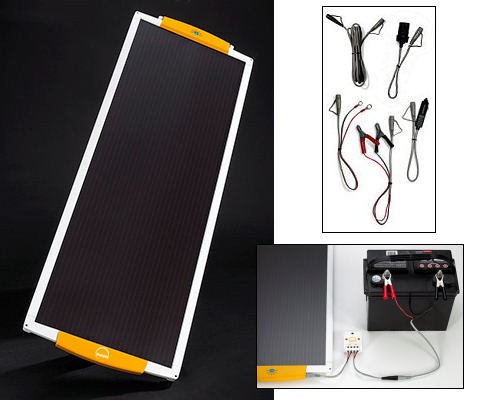So what could solar power possibly offer to the world’s poorest people?
Amongst the seminars with titles like “The Real Value of Distributed Generation,” and “Innovations in Inverters and System Controllers,” at Solar Power International, one stood out as perhaps having a little more interest to the general reader: “Solar Opportunities in the Developing World.” As anyone who has ever looked into buying a residential solar power system of their own knows, solar panels are very expensive. So what could solar power possibly offer to the world’s poorest people?
Turns out, both a lot and, unfortunately, very little. As the seminar’s three panelists made clear, solar power could be a solution to the developing world’s patchy electric grid. Installed solar panels, coupled with batteries to store electricity for when the sun doesn’t shine, could — and do — provide steady power for corners of the globe that will likely never get it otherwise.
But as the panelists all also agreed, that solution is extremely difficult to implement on the ground.
“The Most Expensive Electricity is No Electricity” – Gandhi(?)
Fifty percent of the rural developing world has no electricity, according to Simon Rolland of the Belgium-based Alliance for Rural Electrification, one of the panelists. Of the electricity provided in off-the-grid areas, 95% is generated by diesel generators, which over the long run can be more expensive than solar. Rolland cited the example of charter planes flying in diesel fuel to remote outposts in the Amazon — places with abundant sunlight. Regardless of cost however, as Gandhi said, (according to one of the panelists — I found no verification) “the most expensive electricity is no electricity.” Whoever said it, it is certainly true: without energy, there can be no development.
Lars Koerner of Solar World, a German solar company that has done extensive work in the developing world, cited a successful project in a remote village in Western China. The company, in cooperation with the Chinese Ministry of Finance, set up an 0ff-the-grid system that provides power to 142 villages and about 29,000 people.
Looks Good on Paper
But I got the sense from the conference that such unvarnished success stories are rare. Michael Eckhart of the American Council on Renewable Energy (ACORE) sounded a profoundly pessimistic note, listing a series of international and non-government initiatives since the 1990s to bring solar to the developing world that failed, over and over again. The 1995 Solar Initiative of the World Bank, the 1996 Solar Development Corporation, and the Shell Eskom Solar Energy Services project of 1997-2001, all were either abandoned or failed to live up to the hopes of their organizers.
As Eckhart explained, and Koerner and Rolland agreed, the problem is local infrastructure and support. Many poor countries do not have the banking structure to provide the loans to pay for expensive PV systems. But even if the funds can be found to buy a system, the storage battery will need replacement eight or ten years down the road, and by that time the money that would have been spent on a new battery has often been spent on something else — to repair a bridge or build a school, or to line the pocket of some local leader.
Furthermore, the local servicers that would keep such systems running cannot make a go of it financially without at least 50,000 units installed, according to Eckhart. The Europeans seemed to disagree, but they’re all socialists, as we know, and thus don’t care about profits.
Either way, the end result has been that less than 1% of all photovoltaic panels go to the developing world.
However, given the increasing efficiencies and lower prices of panels, combined with real demand for off-the-grid power, over the long term it seems likely that Eckhart and the other panelists will be proven right that there is in fact a large market for solar in the developing world.
But that market’s creation will depend less on well-meaning people like these panelists and the NGOs they represent, and more on entrepreneurs and their consumers in the countries involved.
Share your industry press now!
Are you a PR agency or sustainability-focused organization? Join the World of Renewables network FREE today and gain exclusive access to our platform to promote your business, share the latest industry news, and connect with a global audience of 700,000+ renewable energy professionals.
Register Now to start posting your updates and showcase your expertise to a highly engaged, environmentally-conscious community.
Find out more about our Content Partnership Programs.*2024 AWARD WINNER* Websites & Mobile Sites, Webby Winner, Peoples Voice 2024













